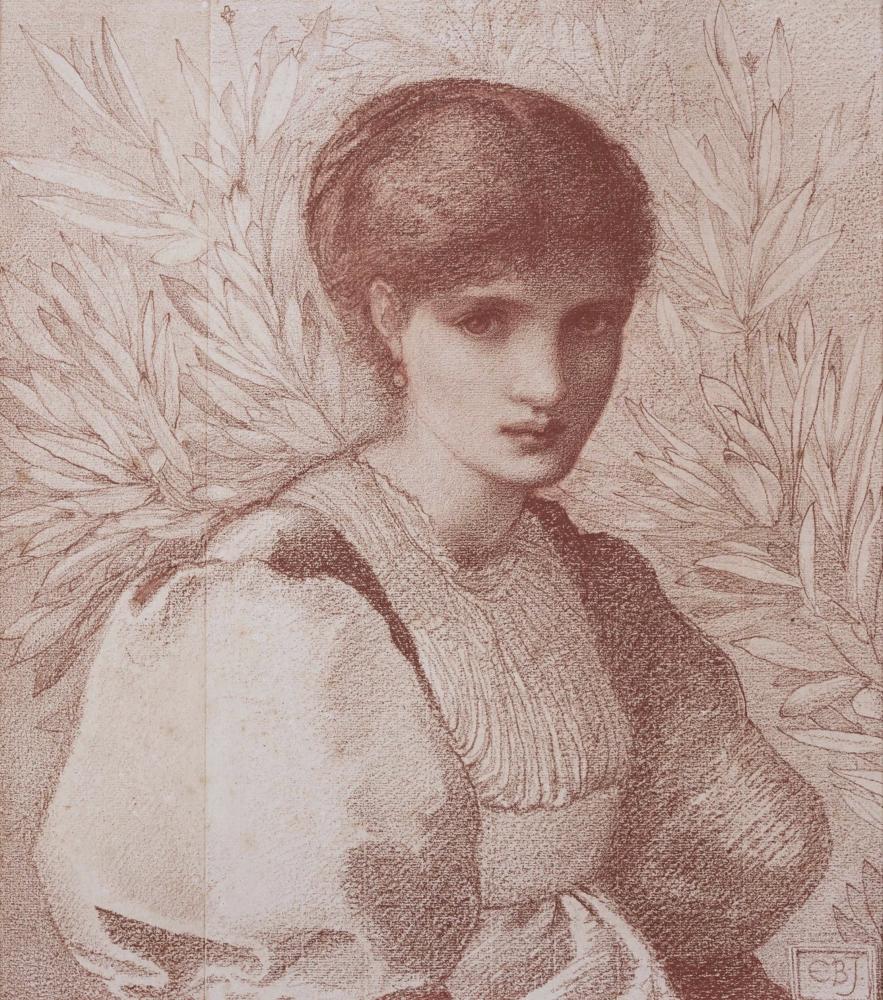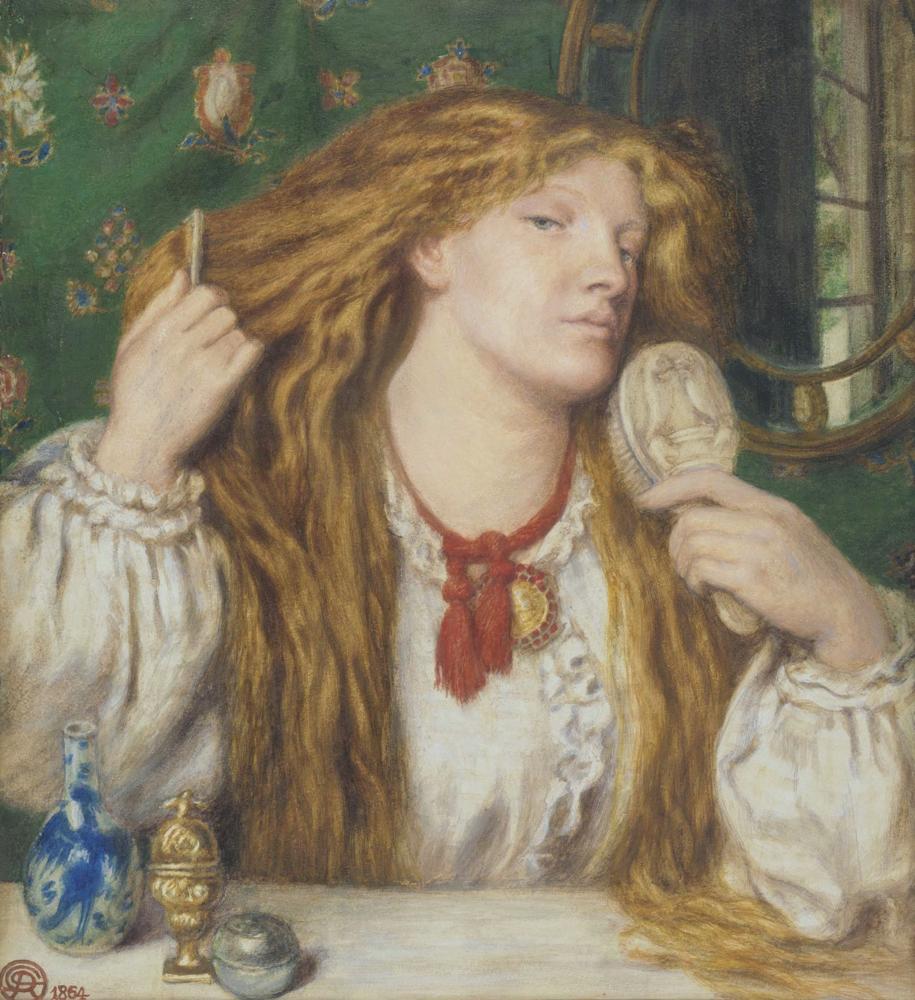DANTE GABRIEL ROSSETTI
(1828 - 1882)
Fanny Cornforth
Provenance
Given by William Michael Rossetti to A.B. Cobb in January 1883
Private Collection, UK
Exhibited
London, Royal Academy, 1875, no. 289
London, Royal Academy, Works by the Late Sir John Everett Millais, Bart., President of the Royal Academy, 1898, no. 76 (lent by Mrs T Evans Lees)
Literature
Times, 1 May 1875, p.12.
Athenaeum, no.2479, 1 May 1875, p.592.
Art Journal, 1875, p.216.
M.H. Spielmann, Millais and his Works, London, 1898, pp.108 (no.76), 172 (no.156).
J.G.Millais, The Life and Letters of Sir John Everett Millais, London, 1899, vol 2, pp.56, 476.
A.L. Baldry, Sir John Everett Millais: His Art and Influence, London, 1909, p.115.
Fanny Cornforth (1826-1906), whose real name was Sarah Cox, entered Rossetti's life in the late 1850s. She herself, in one of two contradictory accounts, dated their meeting to 1856 during a firework display in the Surrey Gardens to mark Florence Nightingale's return from the Crimea. According to William Bell Scott, however, Rossetti 'met her in the Strand. She was cracking nuts with her teeth, and throwing the shells about; seeing Rossetti staring at her, she threw some at him. Delighted with this brilliant navet, he forthwith accosted her, and carried her off to sit to him for her portrait'. Whatever the truth of these stories, Rossetti was certainly in touch with Fanny by January 1858, when Madox Brown recorded that she was sitting to his follower, Burne-Jones; and by the following year we have dated likenesses of her from Rossetti's own hand.
Of humble origin and easy virtue, Fanny possessed striking good looks of a worldly, voluptuous kind. William Michael Rossetti described her as 'a pre-emininently fine woman, with regular and sweet features, and a mass of the most lovely blond hair, light golden or "harvest yellow"'. For his elder brother, Dante Gabriel, her combination of beauty, sexual generosity and sheer animal magnetism proved irrestible after his long and tortured relationship with the neurotic and perpetually ailing Lizzie Siddal. She was almost certainly his mistress before his marriage to Lizzie in May 1860, and when he moved to Cheyne Walk in Chelsea following Lizzie's death two years later, she was established there as his housekeeper. In 1859 she sat for Bocca Baciata(Museum of Fine Arts, Boston), the picture which marks the beginning of his later style, and she continued to dominate his imagination in the early 1860s, becoming the muse of his 'Venetian' phase just as the virginal Lizzie had inspired his earlier 'Dantesque' period. By the late 1860s the more soulful looks of Jane Morris were in the ascendant, but Rossetti continued to rely on Fanny for practical help and the emotional stability he so needed in his later years, when his life was increasingly clouded by mental and physical illness.
This fine drawing, only recently discovered, was given by William Michael Rossetti to A.B. Cobb, the owner of 'Westcliff', the bungalow at Birchington-on-Sea, near Margate, where Rossetti died on Easter Day 1882. The house had been put at Rossetti's disposal at the request of its architect, J.P. Seddon, one of his oldest friends, and the gift was made in recognition of this kindness.
As Virginia Surtees has observed, it also shows a certain cynicism on the part of the donor, since Fanny was an acute embarrassment to Rossetti's family. He had been virtually made to dismiss her in November 1881, three months before he left London for Birchington, a mortally sick man; and the date of his funeral was deliberately kept from her so that she would not be able to attend. In presenting the drawing to Cobb, therefore, William Michael was both thanking a benefactor and getting rid of a likeness of someone his family was happy to forget.
William Michael was hardly in a hurry to give Cobb his drawing, handing it over a full nine months after Rossetti's death. Four months later again, on 12 May 1883, Rossetti's remaining works were sold up at Christie's.
William Michael dated the drawing 'towards 1861', but it may well be a few years earlier and thus one of Rossetti's earliest likenesses of the sitter. Stylistically it is very close to a drawing of the actress Ruth Herbert that he made in 1858, particularly in the treatment of the hair (private collection; see V. Surtees, The Paintings and Drawings of Dante Gabriel Rossetti: A Catalogue Raisonne, Oxford, 1971, vol. I, p. 166, no. 325; vol. 2, pl. 403).


